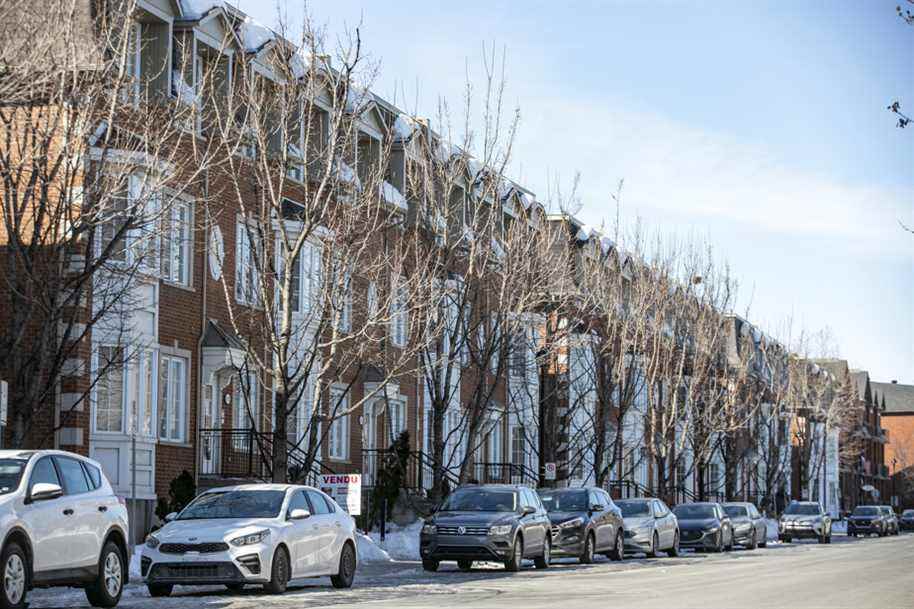Expectations of an acceleration in interest rate hikes are growing visibly in the financial sector. As is the risk of a fiscal shock among mortgage borrowers who, in record numbers for two years, have taken out a variable rate loan to lower their payments.
Posted at 8:00 a.m.
“In the face of rising real estate prices, many buyers stretched their borrowing capacity to the limit by banking on lower payments in the short term with a very low variable rate mortgage compared to fixed rates,” explains Patrick Dumond, team manager at the mortgage brokerage firm Multi-Prêts.
“But in a context of rapidly rising interest rates,” he continues, “these variable-rate borrowers are likely to have unpleasant surprises in the coming months, with a significant increase in interest costs in their mortgage payments. »
How big will these rate hikes be? For now, the consensus among economists in the financial sector is for two successive hikes of 50 basis points (0.5 percentage points each) in the Bank of Canada’s next monetary policy statements, on April 13 and 1er next June. Then, a third rate hike is expected in July, but on a scale reduced to 25 basis points (0.25%).
3%
Interest rate anticipated at the end of July on variable rate mortgages, 1.1% higher than that offered these days, and double the rate available six months ago.
“With the recent change in tone at the Bank of Canada, and the increased likelihood of rate hikes totaling more than 100 basis points (1%) within a few months, it’s now the take-off for a strong run-up in rates mortgages,” warns Robert Kavcic, Senior Economist at the Bank of Montreal (BMO), in his most recent real estate market analysis post.
“Five-year fixed rate loans have already pushed towards 4%; while variable rates are expected to cross the 3% mark by mid-summer, he said. For mortgage borrowers who have budgeted for a lower rate during the pandemic, especially those who have moved to an even lower variable rate, this steep rise in rates could prove a severe financial test in the coming months. »
Popular variable rate loans
In the mortgage loan market, this anticipation of rate increases is already reflected in the schedule of rates offered by major lenders in Canada.
For five-year fixed-rate loans, the average rate among the major banks is now around 3.7%, almost one and a half percentage points (1.5%) higher than one year ago.
But in the variable rate loan market, the average rate hike among the big banks was limited to half a percentage point (0.5%), around 1.95%.
As a result, the rate differential between variable-rate and fixed-rate loans, which had swung to the advantage of variable-rate borrowers at the start of the pandemic two years ago, has remained at a level attractive to mortgage borrowers on a budget.
45%
Record proportion of variable rate loans among all new mortgages in Canada measured in mid-2021 by the Canada Mortgage and Housing Corporation, 20 points higher than the average proportion for eight years.
“These borrowers who have gone to a variable rate to save on short-term payments and thus be able to afford to enter the real estate market, that always scares us a little in the mortgage brokerage sector,” says Patrick Dumond, of Multi-Prêts.
“With a $350,000 variable rate loan, for example, if the rate differential of approximately 1.5% with fixed rates were to close over the next few months, we are talking about an additional interest cost in the order of $300 on monthly payments,” explains Mr. Dumond.
“For variable rate borrowers whose budget is already tight, it could be quite a financial challenge,” he says. That’s why we advise them to add this next interest surcharge to their current budget now. In order to build up a cash reserve to reduce the risk that their fulfilled dream of being a homeowner turns into a financial nightmare. »
Widespread Concerns
Patrick Dumond’s concerns about the financial vulnerability of variable rate borrowers are also found among banking sector economists. And this, despite the introduction in Canada two years ago of a regulatory “qualifying rate” for new mortgage loans, which is the higher rate between the contractual interest rate plus 2%, or 5.25% at minimum rate.
“Household debt in Canada has increased to 186% of disposable income and it is estimated that almost 50% of new mortgages are tied to variable rates. In fact, the Canadian economy presents more risks related to household indebtedness than its neighbor to the south”, indicate the economists of the TD Bank in a recent note of economic analysis.
“Because of very high prices, recent home buyers in Canada are much more sensitive to changes in interest rates than they were 10 or 15 years ago,” said Robert Hogue, economist Principal at the Royal Bank (RBC) in its latest Housing Market Analyst.
“With the risk of a sharp increase in mortgage payments ahead, every buyer across the country will feel the pinch of rising rates. Such a shock could severely stress home buyers and put significant downward pressure on the residential real estate market. »

